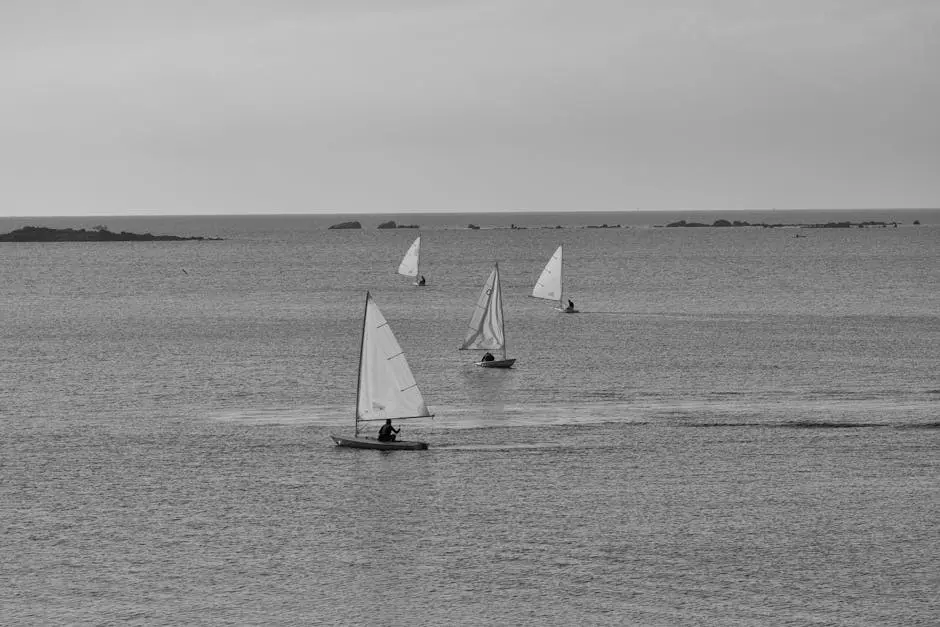Embarking on a sailing journey can be both thrilling and challenging. At our sailing school, we believe that learning should be an enjoyable experience. Whether you’re a complete novice or looking to refine your skills, this blog will cover the fundamental sailing skills you will master during your time with us. Let’s set sail and explore the essential skills that will turn you into a confident sailor!
1. Understanding Wind and Sails
One of the first essential skills you will learn at our sailing school is understanding the wind and how it interacts with sails. Wind is the very force that propels your sailboat, and grasping its behavior is critical to maneuvering effectively on the water. As you familiarize yourself with different wind directions and speeds, you’ll discover how to harness its power to navigate smoothly.
In addition to learning about wind direction—such as headwinds, tailwinds, and crosswinds—you’ll also become adept at sail trim adjustments. These adjustments help you optimize the sails’ shape and angle, ensuring you catch the most wind possible. Understanding how to read the wind is akin to reading a map; it guides your journey and enhances your sailing experience.
Moreover, the ability to anticipate changes in wind conditions can dramatically affect your sailing performance. By observing the water’s surface, the movement of the trees on shore, and the presence of clouds, you can make informed decisions to adjust your course accordingly. This practice not only improves your sailing skills but also instills confidence in your ability to handle various situations.
2. Mastering the Art of Knot Tying
Knot tying is another fundamental skill that you’ll master at our sailing school. While it may seem simple at first glance, the art of knot tying is essential for securing sails, mooring the boat, and ensuring safety on board. Each knot has a specific purpose, and learning the right ones can make all the difference in a sailing situation.
As you embark on this knot-tying journey, you’ll start with basic knots like the bowline and the cleat hitch. These knots are easy to remember and incredibly practical. The bowline creates a fixed loop at the end of a rope, which is perfect for securing objects. The cleat hitch, on the other hand, is crucial for tying off your boat to a dock.
With practice, you will graduate to more complex knots that serve specific purposes, such as the double half-hitch or the figure-eight knot. Each knot you learn not only reinforces your sailing capabilities but also emphasizes the importance of precision and confidence in your actions while out on the water.
3. Navigating with Confidence
Navigating is a crucial skill that separates novice sailors from experienced mariners. At our sailing school, you’ll learn how to navigate using both traditional and modern methods. From reading maps and charts to utilizing GPS systems, navigating is about more than just knowing where you’re going—it’s about understanding how to get there safely.
You will explore key concepts related to navigation, including bearings, waypoints, and routes. Through hands-on training, you will gain practical experience in plotting courses and understanding your position on the water. This skill is invaluable, especially in unfamiliar waters where landmarks may be scarce.
Moreover, understanding nautical terminology and concepts will empower you to communicate effectively with fellow sailors and crew. This foundational knowledge ultimately ensures that you can navigate confidently, making informed decisions that keep both you and your crew safe. By the end of your training, you’ll find that navigating is not just a skill—it’s an exhilarating journey of discovery.
4. Safety Procedures You Need to Know
Safety is a top priority at our sailing school. Understanding safety procedures not only protects you but also enhances your overall sailing experience. You will learn the essential protocols that every sailor needs to follow, from pre-departure checks to emergency procedures.
During your training, you will familiarize yourself with vital safety equipment, including life jackets, flares, and fire extinguishers. Knowing how and when to use this equipment can save lives. You will also receive training on how to handle emergencies, such as capsizing or medical incidents, which instills confidence in your ability to manage unexpected situations.
Additionally, we will emphasize the importance of maintaining a safe environment on board. You’ll learn to recognize and mitigate potential hazards, including improper weight distribution and equipment malfunction. By following these safety measures, you’ll not only protect yourself but also contribute to the well-being of your crew, making sailing a more enjoyable experience for everyone.
5. Docking Techniques for Smooth Arrivals
As you enhance your sailing skills, mastering docking techniques becomes essential for a seamless sailing experience. Docking can be daunting, especially for beginners, but with the right instruction, you’ll learn to approach this task with confidence. Our sailing school provides comprehensive training, allowing you to practice docking in various conditions.
You’ll discover effective strategies for aligning your boat with the dock, factoring in wind and currents. Learning how to use fenders and lines properly will protect your vessel from damage during the docking process. Each session focuses on developing your ability to assess your surroundings, adjust your speed, and angle your approach intelligently.
Ultimately, practicing these skills ensures that you’ll feel at ease when approaching any dock, whether it’s bustling with other vessels or in calm waters. With experience and guidance, you’ll soon find that docking can be as satisfying as sailing itself.
6. Understanding Basic Navigation Tools
Alongside traditional navigation skills, familiarizing yourself with navigation tools is crucial to becoming a competent sailor. At our sailing school, we introduce various tools, such as compasses, charts, and electronic devices that aid in navigation. Being comfortable with these instruments can help ensure a safe and enjoyable sailing experience.
You will learn how to effectively use a compass, understanding magnetic variations and how to take bearings. Charts will become your maps, guiding you through coastal areas or open waters, helping you identify hazards and points of interest. By mastering these fundamental tools, you’ll build a solid framework for successful navigation.
In addition, modern technology such as GPS devices can greatly enhance your navigation capabilities. You will learn how to incorporate these advancements into your sailing routine while never losing sight of traditional skills. The combination of both old and new techniques ensures that you have multiple resources at your disposal, enhancing your confidence as you set sail.
7. Developing Teamwork on Board
Sailing is not just an individual endeavor; teamwork plays a pivotal role in achieving a successful sailing experience. At our sailing school, you will discover the significance of working collaboratively with your crew. Effective communication and shared responsibilities make all the difference when it comes to maneuvering the boat efficiently.
Throughout your training, you will practice various drills that require you to collaborate closely with your fellow sailors. Whether it’s sharing tasks during hoisting the sails or coordinating maneuvers, these exercises foster a sense of camaraderie and mutual trust. Understanding the strengths and weaknesses of each team member will help you navigate challenges effectively.
In addition to learning specific tasks, you’ll also explore leadership dynamics within a team. Understanding how to motivate others and lead by example ensures that everyone is on the same page, making your time on the water more enjoyable. As you develop teamwork skills, you will find that sailing becomes an exhilarating adventure that brings people together.






